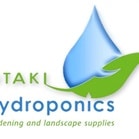Sustainability has recently resurfaced and has become a new rage among the netizens. Gardeners are one the forerunners when it comes to the issue of maintaining sustainability amidst the rapid growth of urbanization. Hence, it is not at all surprising why asking for the experts’ advice in terms of hydroponics system is of utmost importance.
A hydroponic system is a method of growing plants with the absence of the soil. This type of gardening is viewed as a step towards sustainability simply because it promotes the possibility of growing your own food despite living in a constricted space that many people call an apartment.
In this round-up, we reached out to some prominent hydroponics gardeners to share their insights as to what are the 5 things we need to know to start a hydroponic system. If you’re a beginner or a novice, we highly suggest that you take the time to read each advice from top to bottom.
Let’s get started!
Stephen Kavita

We go out of our way to ensure that you have the right information regarding hydroponic farming and systems.
If you want to gain more knowledge about hydroponic gardening and best hydroponics systems then this is the community to join. Let all hydroponic farmers come together and share their expertise on best hydroponic practices.
5 Things We Need To Know To Start a Hydroponic System
1. Faster Growth
Plants grow quicker with hydroponics since it is a more efficient method to grow them. For instance, most specialists agree that plants will grow at least 20 percent quicker with hydroponics compared to soil.
2. Bigger Yields
Researchers have many theories why this is the case; however, the truth is thatspecialists also agree you can expect at least 20 to 25 percent more yields withhydro compared to growing in soil.
3. Hydroponics = Zero soil
With hydro, you can grow plants, even if you do not have soil. There are also noweeds to pull. Lastly, since you are not using soil, you also eradicate lots of soil-borne pests and diseases, which can usually destroy your plants and make plantgrowing a pain.
4. Saving space
Since your plants do not have to spread their roots out into a lot of soil to get thenutrients they require, you can pack more plants closer together, which saves youlots of space.
5. Saving water
Since you are using reservoirs which are covered (to stop evaporation) and nowater leaks out of the bottom (since they are covered), the plants take up the rightamount of water they require at any one time, and the rest stays in the reservoir tobe utilized afterward. In a nutshell, hydroponics growing can save you about 90percent of your water.
Paulina

I am a passionate lifelong gardener and horse woman. Recently we purchased Otaki Hydroponics and Garden supplies, so I now get to work every day with my passion. Otaki is situated in the lower north island of New Zealand – famous for The Lord of the Rings Trilogy and The All Blacks Rugby. We are passionate about our gardening ideas and aim to help support the grower from seed to harvest. We stock organic products, manufacture our own hydroponic nutrient and import products like the Autopot self-watering range from the UK to help the gardener achieve great results.
5 Things We Need To Know To Start a Hydroponic System
1. Choose your system to suit your space. We recommend the Autopot watering systems as theseare simple and easy to use without the need for power or constant monitoring. The Autopotwatering system uses a valve in the pot tray to ensure the plant always has access to waterwithout sitting in it. Gravity is used to deliver water to the plant so there is no worry aboutpower outages that can destroy plant as in in the traditional hydroponic systems.
2. Use the right amount of nutrient. Too little and the plant starves, too much and it is toxic to theplants. Related to this is knowing your plant needs. Lettuce are low feeders and require lessnutrient than tomatoes which are greedy feeders. If you tried to put the two types of plants onthe same line you would either starve the tomato or poison the lettuce.
3. Change your nutrient water often. Plants take up different nutrients at different ratesthroughout their growth cycle. If you leave the nutrient in your system for too long the balanceof the nutrient will no longer be correct. The plants cannot grow to their potential.
4. Flush your system regularly. This stops the salt build up which can block the pipes anddisrupting the flow to the plants.
5. Sterilize your equipment between plantings. There is nothing worse than losing your plants todisease. Between harvests we recommend you sterilize your equipment. You can use simplebleach as an effective treatment. Make sure you rinse the system thoroughly once you’re done.
Greg Hendrick

In some ways perhaps I’m continuing in my grandfather’s footsteps. He homesteaded out here in 1902 and planted one of the first apple orchards in the upper Okanogan Valley. I grew up on my parent’s ranch with horses, apples, pears, and cherries. My wife and I then had our own apple orchard on which we started raising our children. The family saying is that we’ve got apple juice in our veins. To say the least, I like seeing things grow. Later, while living in Ukraine for 10 years, we noticed how expensive and seasonal produce was. After moving back to the U.S. we embarked on a path to find and/or develop hydroponic systems that would allow people to individually grow more of their own produce indoors and year around. We’re still learning and still “homesteading” in a way…pioneering new, more effective ways to grow food worldwide.
Our blog exists as a sharing platform…a way to pass on to others what we’ve seen or experienced.
5 Things We Need To Know To Start a Hydroponic System
1. A willingness to learn and grow with the system is vitally important. You’ll need both patience and perseverance. Be observant and diligent. Plants speak silently. Listen closely.
2. Have the right equipment. Purchase a TDS (Total Dissolvable Salts) or EC (Electrical Conductivity) meter to monitor the level of nutrients in your solution. Use a pH meter as the availability of nutrients to plants is affected by the pH of the water solution.
3. Grow plants that match your growing conditions and match each other. For example, Basil and Mint enjoy a lot of sunshine. Lettuce and delicate herbs need some sunshine but also need to be in the shade during the hottest hours of the day.
4. Plants grow fast hydroponically and you’ll be surprised at how quickly water uptake will increase. If your system is set up outdoors know that even a light wind in summer can significantly increase water usage of your plants.
5. How the plants do depends on how you do. You are in charge. You determine the level of nutrients, the pH of the water solution, the light needs, and the choices of types of plants grown. That’s fun but it’s also a responsibility. Their quality and taste are in your hands!
Tony Hinde

I started hydroponic growing in South Africa as a hobby many years ago and turned it into a business when I retired. I ran it for more than 20 years, and it is now a family business run by my daughter, Megan. Hydroponic.co.za is one of the pioneers of hydroponic growing in South Africa, positioning itself as a prime source of equipment and consumables for the hobby grower. Megan has all the knowledge that I could pass on to her and gives advice to all gardeners.
5 Things We Need To Know To Start a Hydroponic System
1. WHAT DO YOU WANT TO GROW?
For short-term crops or those with small root systems (e.g., lettuce), use NFT (see Systems below)
For longer term crops (e.g., Tomatoes), use system with growing medium (e.g., cocopeat)
2. LIGHT, AIR AND TEMPERATURE
For vegetables, choose a location that has 6 – 8 hours of sunlight, not in shade and sheltered from the wind.
The optimum temperature range for growing is 18 – 25 degrees C.
3. WATER
Analyse your water, especially if you are using a borehole. There may be something in excess which can be toxic. A nutrient solution is balanced to provide optimum plant growth in normal water.
4. HYDROPONIC SYSTEMS
A) Active systems – with pumps, and electricity, e.g., Nutrient Film Technique, Deep Water Culture Ebb and Flow and dripper/sprinkler systems
B) Passive systems – no electricity, but rely on capillary action to deliver nutrient e.g., Autopot.
5. HOW MUCH TIME DO YOU HAVE?
Active systems usually require more attention than passive systems, so the amountof time you have available to maintain your hydroponic system is important.
The above is only a very broad outline of hydroponic growing.
Luke Petkovich

One of the main things to know when first setting up your hydroponic system is the location of the system itself. Determining where to put your setup can be just as important as other steps for one main reason – you can ruin everything with bad positioning.
Here are some of the things you want to keep in mind:
5 Things We Need To Know To Start a Hydroponic System
1. If you are growing plants indoors, make sure your hydroponic system is not leaking. Check underneath the buckets and if you are working with a pressurized system, check all the junctures and connection points. Worst case scenario — water leaks over your electric systems and wiring and you lose power for a month.
2. Plants need light and they tend to grow towards the light source. Unless your grow is in a penthouse, you’re gonna need some serious lighting. Deep Water Setup combined with an old closet and a couple high-power lamps can do wonders.
3. While we are talking about light, another thing you must know are light periods. During vegetative stage plants need 18-24 hours of light, while in the flowering stage they need at least 12 hours of uninterrupted dark each day (and we mean COMPLETE dark). One exception to this rule are auto flowering plants (like certain cannabis strains). They simply don’t care how much light they get.
4. Indoor grows require checking up on every few hours. Lighting can go out due to a short circuit, water can leak, since accidents happen when electrical materials are working for long periods of time.
5. Consider getting some type of fan to move the air in the room/closet. It’s going to get hot due to all those lights. Fans will lower the chance of a circuit shorting out due to material degradation
Matt Green

GardeningEasily.com is an awesome place where you can find your daily useful needs by ourunbiased garden product reviews as well as gardening tips and ideas. They are available & integralpart of our daily gardening life.
I started this website to help gardeners to chose the best garden tools, gardening tips and ideasfrom everything growing your own plants, fruits & veggies. As a gardening enthusiast, I love tospend my time at gardening and planting going to my favorite garden.
5 Things We Need To Know To Start a Hydroponic System
Hydroponic systems are tools and equipment packaged together so that to grow plants hydroponically (no use of soil but a water based nutrient-rich solution)
To start a hydroponic System you should know that the system:
1) Water saver/water preservation: hydroponic systems use up to 90% less water as compared to soil methods. System recalculates water, no need to replenish. The downfall of this system is the concentration of nutrients. Therefore, a need to add reservoir with fresh water or change reservoir once a week
2) Space efficient: means that hydroponic system allows you to plant more than one crop in the same space by feeding the plant with drip feeder that connects to a reservoir. These make it possible to squeeze a fairly large harvest onto small space
3) Nutrients preservation: the system allows us to control ph, oxygen levels and nutrients for the plant. Nutrients required by the plant are delivered straight to the roots enabling you to control everything happening to your plant
4) Doubles growth speed: since under this system you can give plants the required amount of nutrients and oxygen, These make plant to increase growth rate twice as fast as compared with plant grown in the soil.
5) Fewer pesticide and herbicides. Each plant is grown in its container and nutrients fed directly to plants through roots. Therefore, no way other plants can grow hence the fewer use of herbicides and pesticides
Yash Sharma

Born and brought up in the Himalayas, Yash has a deep fondness for mountains and the mother nature. He is passionate about finding new ways to keep the green element of his home alive and sharing them with his readers. He enjoys writing about smart home technologies and luxury. You will find him working out or exploring countryside when he is offline.
I hope my small write-up will help people in growing a beautiful hydroponic garden.
5 Things We Need To Know To Start a Hydroponic System
While planning to start a hydroponic system, first you need to identify the location of your system which will further determine whether or not you need to install grow lights and timers.
Next, you need to choose the right type of hydroponic system that fits your budget and space. Generally, there are two types of hydroponic systems – active and passive. An active hydroponic system brings maximum growth and yield in less time as the nutrient solution is delivered directly to roots whereas passive systems are a little easier to set up and maintain but offer slow growth due to the limited amount of oxygen around roots.
Choosing the appropriate growing medium is also very crucial – it must hold plants and nutrients while maintaining proper distribution of water, oxygen and carbon dioxide to create optimal growing conditions for plants.
Prearrange specific measures to regulate temperature and humidity levels in the grow room and pH levels in the water solvent.
You will need fans or blowers to catalyze pollination and provide fresh air to the plants.
An uninterrupted supply of electricity and water is of utmost importance for the success of your hydroponic project
Virginia

Growing herbs in a hydroponic system is one of the best ways to enjoy fresh herbs all year round. In fact, many famous restaurants grow hydroponic herbs on site to ensure they have a steady supply of culinary herbs on hand.
Hydroponics has become even more popular in the home garden. From supermarket basil to the popular Aerogarden herb system, this low maintenance growing method is the latest way to grow fresh herbs at home.
Here are a few tips that every gardener should know before starting a new hydroponic herb garden.
5 Things We Need To Know To Start a Hydroponic System
1. Select an appropriate growing medium for the type of herbs you plan to grow. We find the net pots with expanded clay pellets work very well for a home herb garden.
2. Know the mineral content of your tap water before you start. If you have hard water, it may impact the root’s ability to absorb nutrients properly. In this case, select a mineral base specially designed for use with hard water.
3. The nutrient base used should have a high nitrogen to phosphorus ratio to promote healthy vegetative growth.
4. Use a Ph testing kit so you can keep an eye on the Ph of your hydroponic system. A slightly acidic level of 6.0 works very well for herbs.
5. Invest in a good quality indoor lighting system that can be adjusted as your herb plants grow. The lights should be placed six to twelve inches above the top of your plants. Hydroponic herbs are a fun and easy way to start an herb garden at any time of year. We encourage all gardeners to give hydroponics a try!
Elvis Meisters

Hydroponic Systems are fascinating system because you are growing plants without using soil, but for example perlite, coconut coir and other materials.
So there are five things you should know before starting a Hydroponic System.
1. By using Hydroponic System, you are increasing plant growth rate by ~20%. That’s right. Bynot using the soil you get faster-growing plants. It’s obtained by giving plants the properproportion of nutrients and all other elements.
2. As a soil, you can use coconut fiber, gravel, crushed stone, and also expanded clay, perlite,vermiculite. But remember to check PH level, it should be about 5,6.
3. The most significant advantage by using this system is that there is no need to monitor thewater level regularly, plants will not suffer from a lack of oxygen, there is no problem ofoverdosing the fertilizers, since the plant itself takes as much as it needs.
4. The hydroponic system avoids almost all plant diseases associated with the soil (rot,nematodes, fungal infections, etc.), and water must be added two times a week up to threetimes a month, depending what type of plant it is and how big it is.
5. There will not be rainy days, drought or cold or too hot and that’s why plants will growconstantly. You can grow them all year long no matter the weather or location. But remember,that does not mean that you don’t need to look out for plants. They still need to be maintainedand looked after!
Continue updating…
Conclusion
Well, it isn’t that hard to get started your own hydroponics, right? But it isn’t a walk in the park either. I hope these experts’ pieces of advice have inspired you to give hydroponics a try. A big THANK YOU to all the experts who have willingly shared their knowledge and expertise. Without them, this round-up wouldn’t be successful.
Want to know more? Check out our other hydroponics articles and learn a new thing or two about this gardening method! Click here for more hydroponics articles!